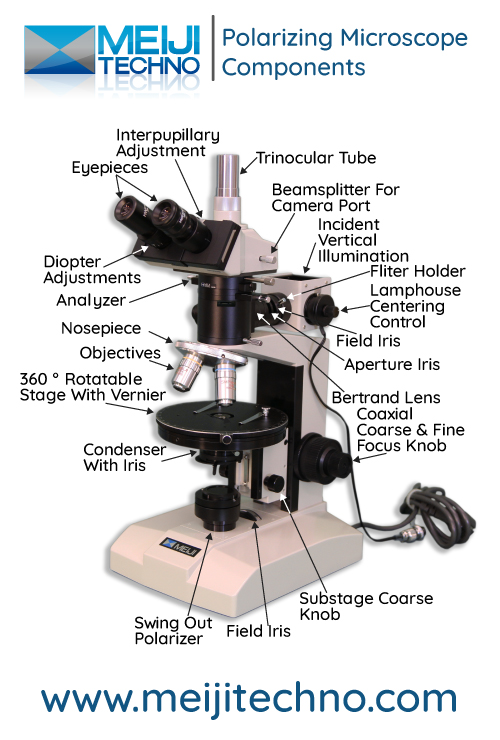polarizing microscope parts and functions pdf
Aligning the light wave oscillation in a specific plane. Structural support that holds connects the eyepieces to the objective lenses.
Starch birefringence is clearly identified using polarized microscopy due to observation of high contrast Maltese cross patterns in non-heat-treated specimens see Fig.
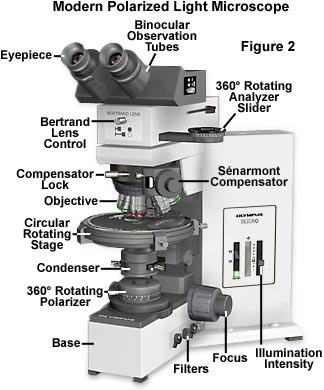
. Because polarizer and analyzer planes are crossed the image will be dark. Main Microscope Parts and Functions. Polarizing microscopy is effective to examine food products that exhibit optical anisotropy or birefringence.
Polarizing Light Microscopy It is a technique where polarized light is used in microscope to evaluate composition and three dimensional structure of anisotropic. Week 1-Dissecting the Microscope Goal. Base It acts as microscopes support.
The most critical aspect of the circular stage alignment on a polarizing microscope is to ensure that the stage is centered within the viewfield and the optical axis of the microscope. Microscopes are used for many different purposes. A simpler and cheaper system utilizes sheets of Polaroid film or a sheet of polyvinyl alcohol.
Several food components are birefringent notably starch granules fat crystals and protein fibers. The polarizing microscope is a specialized magnification instrument. The part that is looked through at the top of the compound microscope.
Fine tunes the focus and increases the detail of the specimen. Head This is also known as the body. Normal light vibrate in many plane or vibration.
Polarized microscopy is primarily used in the field of geology or petrography for the study of rocks and minerals but has many other applications. The upper part of the microscope houses the eyepiece and objective lenses. This is an excellent choice for Petrographic examination of aggregates and concrete samples.
Additional science fields that benefit from polarization include medicine chemistry biology and metallurgy. Eyepiece ocular lens with or without Pointer. The parts of the microscope that are located above the base but below the stage are called the substage assembly.
It is a device which is used to analyze or create polarized light. If the stereo microscope has both reflected and transmitted light a. While most geologists are familiar with petrographic or polarizing microscopes there are many additional features that can be used for the study of Earth materials.
Polaroid- Fig No 2 Fig No 3. Polarizing microscopes use one polarizer between the light source and condenser and a crossed polarizer at the objective Figure 1 f. Brings the specimen into general focus.
There are two polarizing filters in a polarizing microscope - termed the polarizer and analyzer see Figure 1. Where the eyepieces are dropped in. It is equipped with two polarizers which enable minerals to be examined under plane-polarized light for their birefringence and refraction characteristics.
Citric acid crystals under polarized light. How to Identify Parts on a Compound Microscope. Interactive video showing typical adjustments that can be made on the substage assembly.
Polarizing Light Microscopy Presented by Supervised by Dr Faruq Ahmed Rezwan Prof. Both are based on light polarization. Arms This is the part connecting the base and to the head and the eyepiece tube to the base of the microscope.
A rotating turret that houses the objective lenses. Parts of Polarising Microscope It is majorly different parts of this Microscope on the basis. Polarizing Light Microscopy.
In polarizing microscope Nicol prisms of calcite were formerly added below the condenser or in the ocular. Useful notes on Polarisation Microscope. The arm connects the body tube to the base of the microscope.
The body tube connects the eyepiece to the objective lenses. It also carries microscopic illuminators. Polarisation microscope is quite similar to the interference microscope.
The flat platform that supports the slides. In polarizing Microscope a polarizer is used which allow passage of light of one vibration direction. BPM800 is an advanced Polarizing Microscope with Reflected incident and Transmitted lights along with excellent quality strain-free optics objective lenses and condenser.
PDF Introduction to Microscopy its different types in optical and electron based microscopy. This microscope provides conoscopic illumination to allow for conoscopy. Parts of a eyepiece arm stageclips nosepiece focusing knobs illuminator stage objective lenses head base Label the parts of the microscope.
The technique of polarizing microscopy exploits the interference of the split light rays as they are re-united along the same optical path to extract information about these materials. Mohammad Kamal MD Resident Pathology Phase A BSMMU. Reflected Light Microscope 3.
The first step in polarized light microscope alignment is to establish proper Köhler illumination with both the polarizer and analyzer removed from the optical pathway. Polarized Microscope Alignment Procedure. Eyepieces typically have a magnification between 5x 30x.
This is accomplished with the two centering knobs located on the front of the stage illustrated in Figure 6. The polarizer is positioned beneath the specimen stage usually with its vibration azimuth fixed in the left-to-right or East-West direction although most of these elements can be rotated through 360 degrees. Anisotropic materials act as beam splitters and divide light rays into two parts.
It carries the optical parts in the upper part of the microscope. There are two ways to obtain polarization when using a stereo microscope. II Parts and Function of a.
Polarization is typically used with a stereo microscope in order to reduce the glare of reflected parts - particularly any metallic parts circuit boards or any pieces that are producing a lot of glare. Place a brightfield stained specimen on the stage and rotate the 10x objective into the observation position. To become familiar with the function and use of the polarizing microscope.
You can use the word bank below to fill in the blanks or cut and paste the words at the bottom. The substage assembly includes the condenser the lower polarizer light filters and diaphragms. The primary function in polarized light.
Common compound microscope parts include. Monocular or Binocular Head. Also it connects the eyepieces to the objective lenses.

Polarized Light Microscopy Microscope Configuration Olympus Ls

Polarization Microscopy The Motic Ba310 Polarizing Microscope A Review The Canadian Nature Photographer Robert Berdan
Polarizing Petrographic Microscopes
Polarizing Petrographic Microscopes
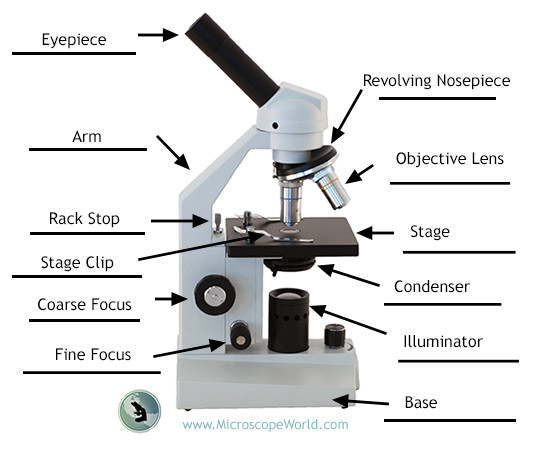
What Is A Compound Microscope Microscope World Blog
Polarizing Petrographic Microscopes
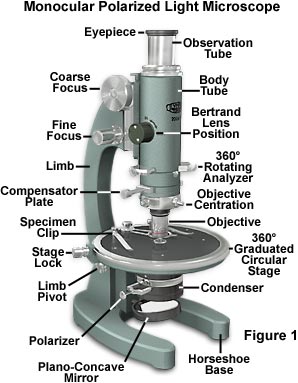
Polarized Light Microscopy Microscope Configuration Olympus Ls
5 Optical Mineralogy Mineralogy
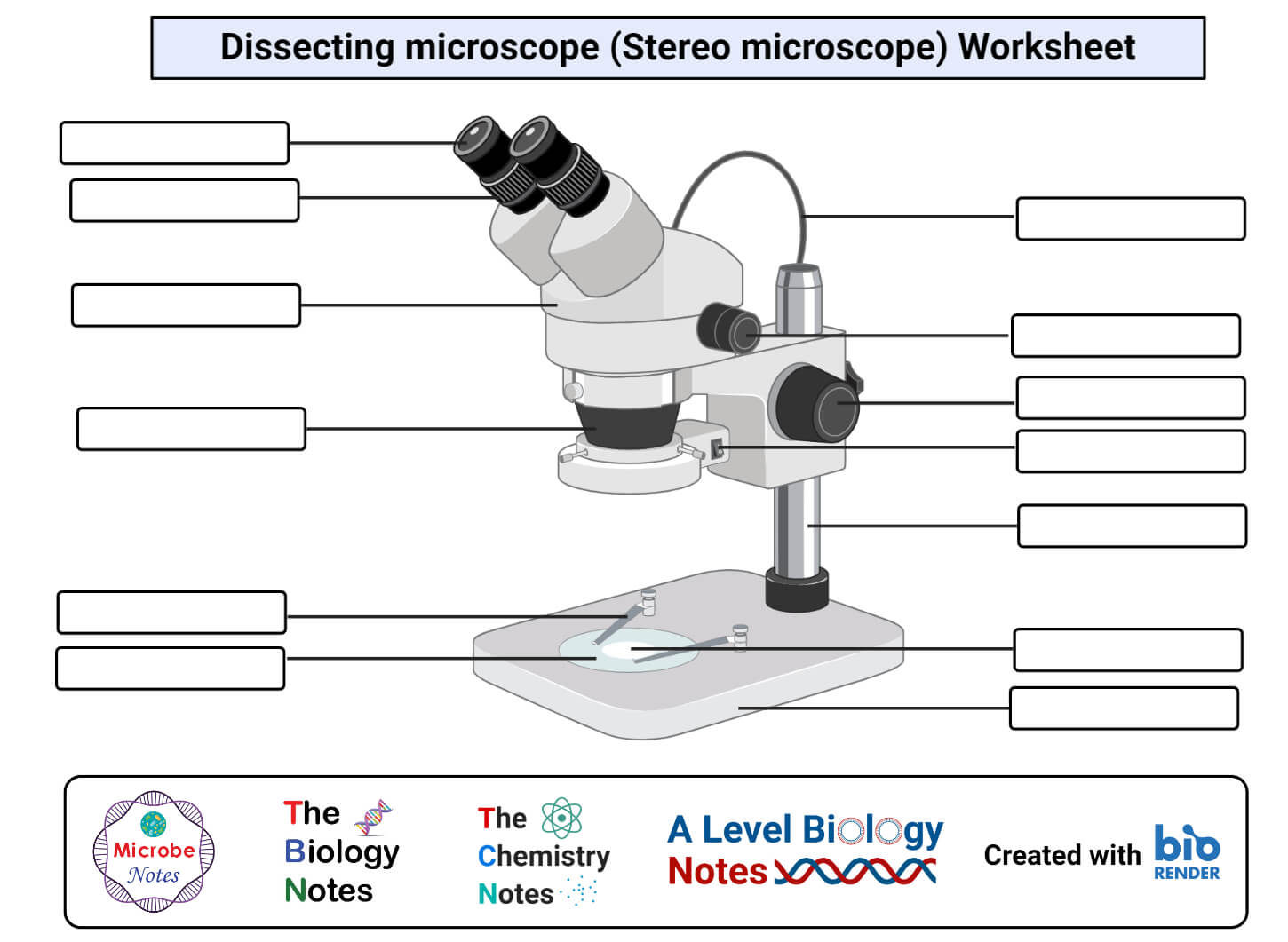
Parts Of A Microscope With Functions And Labeled Diagram
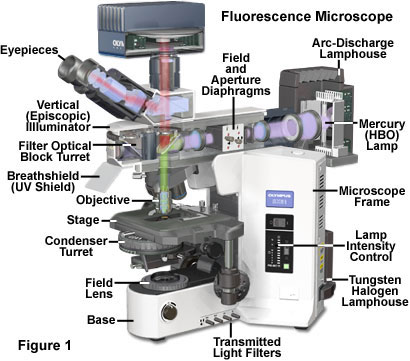
Fluorescence Microscopy Anatomy Of The Fluorescence Microscope Olympus Ls

Polarization Microscopy The Motic Ba310 Polarizing Microscope A Review The Canadian Nature Photographer Robert Berdan

